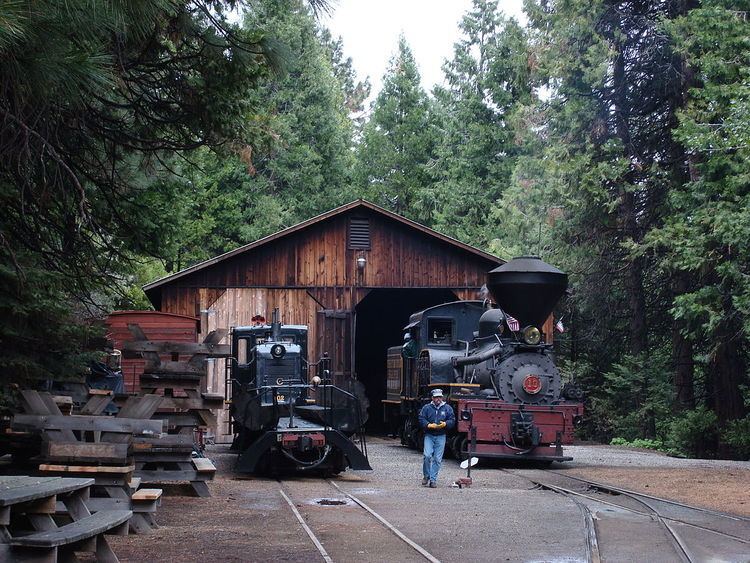Closed 1931 Headquarters Tuolumne Original gauge 3 ft (914 mm) Opened 1874 | 1961 Reopened Phone +1 559-683-7273 Preserved gauge 3 ft Built by California Lumber Company | |
 | ||
Hours Open today · 9:30AM–3:30PMSunday9:30AM–3:30PMMonday9:30AM–3:30PMTuesday9:30AM–3:30PMWednesday9:30AM–3:30PMThursday9:30AM–3:30PMFriday9:30AM–3:30PMSaturday9:30AM–3:30PMSuggest an edit Similar Sierra Nevada, Fresno Flats Historical, Pioneer Yosemite History C, Mariposa Grove, Wawona Hotel and Pavilion | ||
The yosemite mountain sugar pine railroad in action
The Yosemite Mountain Sugar Pine Railroad (YMSPRR) is a historic 3 ft (914 mm) narrow gauge railroad with two operating steam train locomotives located near Fish Camp, California, in the Sierra National Forest near the southern entrance to Yosemite National Park. Rudy Stauffer organized the YMSPRR in 1961, utilizing historic railroad track, rolling stock and locomotives to construct a tourist line along the historic route of the Madera Sugar Pine Lumber Company.
Contents
- The yosemite mountain sugar pine railroad in action
- Yosemite mountain sugar pine railroad 2015
- History
- Motive Power
- Points of interest
- References
Service began with the purchase of three-truck Shay locomotive No. 10 from the West Side Lumber Company railway of Tuolumne, California. Built in 1928, No. 10 was recognized as the largest narrow gauge Shay locomotive—and one of the last ever constructed. After his retirement in 1981, Rudy Stauffer was succeeded by his son, Max, as the railroad's owner and operator. In 1986, the YMSPRR purchased Shay No. 15—also a former West Side Lumber Company locomotive—from the West Side & Cherry Valley Railroad tourist line in Tuolumne.
The two steam locomotives operate daily during the summer months, while the railroad's Model A "Jenny" railcars, capable of carrying about a dozen passengers, typically handle operations during the off-season.
Yosemite mountain sugar pine railroad 2015
History
The current railroad follows a portion of grade originally carved into the mountain by the Madera Sugar Pine Lumber Company in the early 20th Century. The company originated in 1874, when it was organized as the California Lumber Company to log the area surrounding Oakhurst, California. The Madera Sugar Pine Lumber Company once had a large sawmill at Sugar Pine, California, just south of the current YMSPRR. The railroad had seven locomotives, over 100 log cars, and 140 miles (230 km) of track in the surrounding mountains. In addition to the railroad, the Company also transported lumber in a flume that stretched 54 miles (87 km) from Sugar Pine to Madera, California. This was the most efficient way to transport rough cut lumber out of the mountains for finishing and transport at the bottom of the mountain. The Madera Sugar Pine Lumber Company practiced clearcutting, which removed almost every single tree within the stands of timber surrounding the YMSPRR track. The thick forest surrounding YMSPRR today belies this history, although large stumps from the original old growth timber dot the forest floor lining the tracks.
Due to the onset of the Great Depression and a lack of trees, the operation closed in 1931. But the graded right-of-way through the forest remained, enabling the Stauffer family to reconstruct a portion of the line in 1961. The current railroad utilizes locomotives, converted log disconnect cars, and other railroad equipment purchased from the West Side Lumber Company after it ceased railroad operations in 1961.
